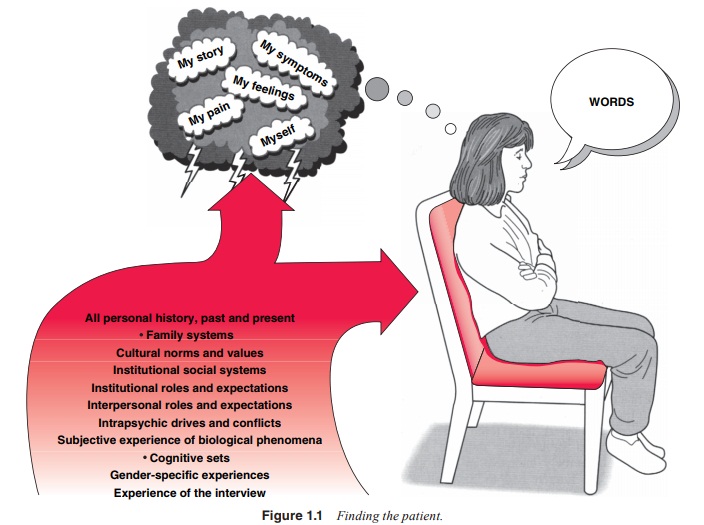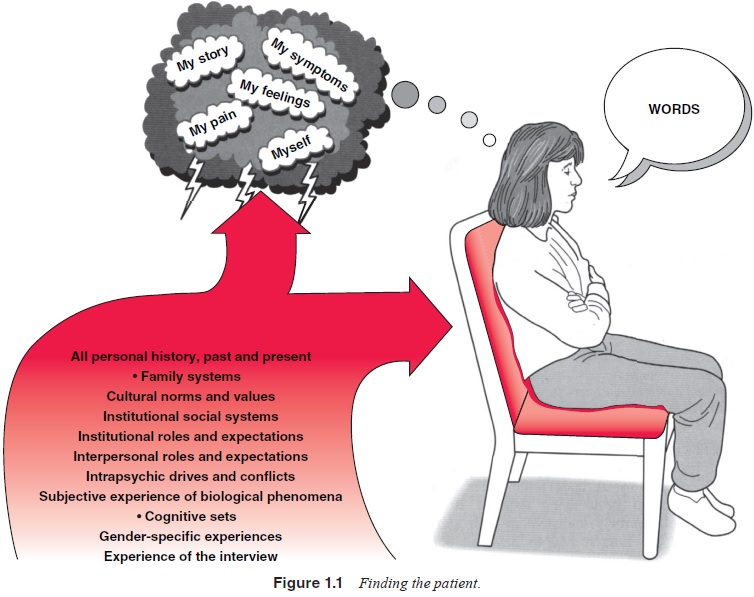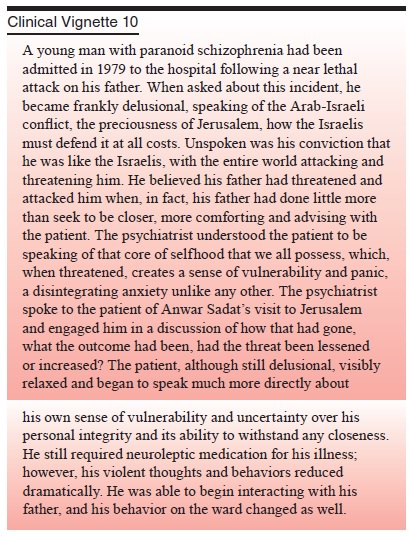Chapter: Essentials of Psychiatry: Listening to the Patient
Using Oneself in Listening

Using Oneself
in Listening
Understanding transference and countertransference
is crucial to effective listening. Tomkins, LeDoux, Damasio and Brothers have
given us a basic science, biological perspective on this proc-ess. However one
defines these terms, whatever one’s theoretical stance about these issues,
Harry Stack Sullivan (1969) had it right when he said that schizophrenics are
more human than anything else. To know ourselves is to begin to know our
patients more deeply. There are many ways to achieve this. Personal therapy is
one. Ongoing life experience is another. Supervision that empha-sizes one’s
emotional reactions to patients is still a third. Once we have started on the
road to achieving this understanding by therapy, supervision, or life
experience, continued listening to our patients, who teach us about ourselves
and others, becomes a lifelong method of growth.
To know oneself is to be aware that there are
certain com-mon human needs, wishes, fears, feelings and reactions. Every
person must deal in some way with attachment, dependence, authority, autonomy,
selfhood, values and ideals, remembered others, work, love, hate and loss. It
is unlikely that the psychia-trist can comprehend the patient without his own
self-awareness. Thus, Figure 1.1 should really look like Figure 1.2. The most
psy-chotic patient in the world is still struggling with these universal human
functions.
In this case, the psychiatrist was able to connect
with a patient’s inner experience in a manner that had a fairly dra-matic
impact on the clinical course. That is the goal of listen-ing. The art is
hearing the patient’s inner experience and then addressing it empathically,
enabling the patient to feel heard and affirmed. There are no rules about this,
and at any given point in a clinical encounter there are many ways to
accomplish it.



There are also many ways to respond that are
unhelpful and even retraumatizing. The skilled psychiatrist, just as she/he
never for-gets that it is the patient’s inner experience that is to be heard,
also never stops struggling to find just the right words, gestures, expressions
and inflections that say to a patient, “you have been understood”. The most
clever diagnostician or insightful inter-preter who cannot “connect” with the
patient in this manner will miss valuable information. This issue has been
addressed by writers who have pointed out how little understood are the
con-cepts of support and empathy (Peteet, 1982).
Being human is also to be a creature of habit and
pattern in linguistic, interpersonal, and emotional realms. The skilled
psychiatrist listens with this ever in mind. What we see in the interview, what
we hear in interactions, may be presumed to be repetitions of many other
events. The content may vary, but the form, motive, process and evolution are
generally universal for any given individual. This, too, is part of listening.
To know what is fundamentally human, to have a well-synthesized rigor-ous
theory, and to hear the person’s unique but repetitive ways of experiencing are
the essence of listening. These skills “find” the patient in all his/her
humanity, but then the psychiatrist must find the right communication that
allows the patient to feel “found”.
Related Topics